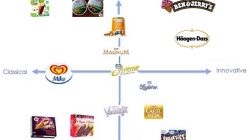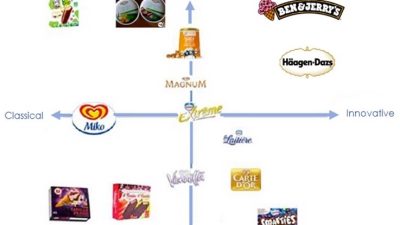Driving Consumer Engagement Through Smart Electronics Marketing Strategies sets the stage for an exciting exploration into the transformative world of smart electronics. As technology continues to evolve, innovative marketing strategies are essential for capturing consumer interest and driving brand loyalty. This narrative delves into the latest trends, consumer behavior insights, and effective campaign tactics that can elevate your marketing game in the electronics sector.
In a landscape where consumer preferences shift rapidly, understanding the role of smart electronics in enhancing everyday life is crucial. By identifying key trends and consumer behaviors, businesses can tailor their marketing efforts to resonate deeply with their audience, ensuring impactful engagement and sustained success.
Introduction to Smart Electronics Marketing Strategies
Smart electronics encompass a range of devices equipped with advanced technology, allowing them to perform complex functions, connect to the internet, and enhance user experiences. These products, from smart home devices to wearables, play a pivotal role in consumer engagement by facilitating seamless interactions and personalization. Their ability to gather and analyze data creates opportunities for brands to build deeper relationships with consumers, ultimately driving loyalty and sales.Innovative marketing strategies are essential in the electronics sector due to the rapid pace of technological advancement and changing consumer preferences.
As the market becomes increasingly competitive, companies must leverage unique marketing approaches to stand out and connect with their target audience. This includes utilizing digital channels, personalized messaging, and immersive experiences that resonate with tech-savvy consumers.
Current Trends in Smart Electronics Marketing
Understanding the evolving landscape of smart electronics marketing is crucial for success. Here are some of the key trends currently shaping the industry:
- Personalization: Tailoring marketing messages and product recommendations based on consumer behavior and preferences enhances engagement. Brands are using AI-driven algorithms to analyze data and deliver customized experiences.
- Omnichannel Marketing: A cohesive presence across various platforms—online and offline—ensures that consumers receive consistent messaging and experiences. This approach bridges the gap between different shopping channels.
- Content Marketing: High-quality, informative content such as blogs, videos, and webinars not only educates consumers about smart electronics but also positions brands as thought leaders in the industry.
- Influencer Partnerships: Collaborating with tech influencers can amplify reach and credibility. Influencers help to humanize brands and provide authentic endorsements that resonate with target audiences.
- Augmented Reality (AR) Experiences: AR technologies allow consumers to visualize how smart electronics would fit into their lives. This immersive experience can significantly enhance the decision-making process.
“Smart electronics are not just products; they are integral to a lifestyle that connects consumers to their aspirations and everyday needs.”
These trends reflect a dynamic approach to marketing that not only focuses on selling products but also on creating meaningful interactions that foster brand loyalty and consumer satisfaction. By staying ahead of these trends, companies can effectively engage consumers in an increasingly digital and connected world.
Understanding Consumer Behavior in Electronics
Consumer behavior in the electronics sector, particularly concerning smart devices, is influenced by a multitude of factors that shape purchasing decisions. Understanding these factors is crucial for marketers aiming to enhance consumer engagement and ensure their strategies resonate with the target audience. As technology continues to evolve, so too do consumer preferences, which require businesses to adapt and respond dynamically.Advancements in technology have significantly shifted consumer preferences, leading to a new era of expectations and demands.
Today’s consumers are not only looking for cutting-edge features but also prioritize usability, connectivity, and sustainability. Brands must carefully consider these aspects to appeal effectively to their audience.
Factors Influencing Purchasing Decisions
Several key factors play a vital role in shaping the purchasing decisions of consumers in the smart electronics market. Understanding these factors can provide valuable insights for developing effective marketing strategies.
- Technological Features: Consumers are increasingly drawn to the latest technological innovations, such as AI integration, IoT connectivity, and enhanced functionalities. Products that showcase unique features often stand out and drive purchasing decisions.
- Brand Reputation: Trust in a brand significantly impacts consumer choice. Established brands with a history of reliability and quality often have an advantage over newer or lesser-known players in the market.
- Price Sensitivity: While consumers may be willing to pay a premium for cutting-edge technology, price remains a critical factor. Competitive pricing strategies can attract more customers, especially in a market flooded with options.
- Reviews and Recommendations: Consumers often rely on peer reviews and recommendations when making decisions. Positive feedback can greatly influence purchasing behaviors, while negative reviews can deter potential buyers.
- Design and Aesthetics: The visual appeal of a product can be a decisive factor. Sleek designs and attractive packaging often enhance consumer interest and perceived value.
Evolving Consumer Preferences with Technology
The rapid pace of technological advancements has transformed consumer preferences over the years. Consumers now demand not only functionality but also seamless integration with other devices and platforms.
- Emphasis on Connectivity: The rise of smart homes has led consumers to prefer products that easily connect with other smart devices, enhancing overall user experience and convenience.
- Sustainability Considerations: As environmental concerns grow, consumers are increasingly opting for eco-friendly products. Brands that showcase their commitment to sustainability can appeal to this conscientious audience.
- Customization Options: Personalization has become a crucial aspect of consumer engagement. Products that allow users to tailor features or designs to their preferences are gaining popularity.
- Enhanced User Experience: With the evolution of user interfaces, consumers expect intuitive and easy-to-navigate experiences. Brands that prioritize user experience in their product design often see increased loyalty and satisfaction.
Importance of Consumer Feedback
Consumer feedback is invaluable in shaping effective marketing strategies for smart electronics. It provides insights that help brands understand their audience better and refine their offerings.
- Product Improvement: Feedback helps identify strengths and weaknesses in products, allowing companies to make necessary adjustments and enhance performance.
- Market Insights: Analyzing consumer feedback can reveal emerging trends and preferences, enabling brands to stay ahead of the competition.
- Customer Loyalty: Engaging with consumers and addressing their concerns fosters loyalty. Brands that actively seek and implement feedback often enjoy higher retention rates.
- Tailored Marketing Strategies: Understanding consumer sentiment allows for more targeted marketing efforts, ensuring that messages resonate with the audience.
Developing Targeted Marketing Campaigns

In today’s rapidly evolving tech landscape, developing targeted marketing campaigns is essential for capturing consumer interest and driving sales in smart electronics. By understanding your audience, brands can tailor messaging and strategies that resonate and convert. This section Artikels a systematic approach to identifying target demographics and crafting compelling marketing campaigns for smart electronics.Identifying target demographics is the first step in creating effective marketing campaigns.
This process can be accomplished through a structured method that examines various factors influencing consumer choices.
Identifying Target Demographics
A clear understanding of target demographics can significantly enhance marketing efforts. The following steps Artikel a systematic approach to identifying these demographics:
- Conduct Market Research: Utilize surveys, focus groups, and industry reports to gather data on potential consumers.
- Analyze Customer Profiles: Review existing customer data to identify common characteristics among current buyers, such as age, gender, income, and education level.
- Utilize Social Media Analytics: Leverage insights from social media platforms to understand audience engagement and preferences related to smart electronics.
- Monitor Competitor Strategies: Examine how competitors target similar demographics and identify gaps in the market.
- Segment by Psychographics: Beyond demographics, delve into consumer lifestyles, values, and interests that indicate potential buying behavior.
Understanding behaviors and preferences is crucial for segmenting audiences effectively. Smart electronics often have various features appealing to different consumer segments.
Segmenting Audiences Based on Behaviors and Preferences
Segmenting your audience allows for precise marketing strategies that cater to specific interests and needs. The following methods can be employed for effective audience segmentation:
- Behavioral Data Analysis: Track consumer interactions with your products, including purchase history and online behavior.
- Interest-Based Targeting: Identify specific interests related to smart electronics, such as gaming, home automation, or fitness tracking.
- Usage Patterns: Segment consumers based on how frequently and in what context they use smart electronics.
- Customer Feedback: Gather insights through customer reviews and feedback, which highlight preferences and pain points.
The final step in developing targeted marketing campaigns is designing a blueprint that emphasizes the appealing features of smart electronics. This approach ensures that marketing messages speak directly to consumer desires and needs.
Marketing Campaign Blueprint for Smart Electronics
When constructing a marketing campaign for smart electronics, it’s essential to focus on features that resonate with consumers. The following elements should be included in the campaign blueprint:
- Feature Highlighting: Clearly communicate standout features of the product, such as energy efficiency, innovative design, and user-friendly interfaces.
- Consumer Benefits: Illustrate how these features solve specific problems or improve the user’s quality of life, such as enhancing home security or simplifying daily tasks.
- Multi-Channel Strategy: Utilize various platforms (social media, email, PPC ads) to reach different segments effectively.
- Engagement Tactics: Foster consumer engagement through contests, giveaways, or user-generated content campaigns that encourage sharing experiences.
- Feedback Loop: Implement mechanisms for collecting consumer feedback post-purchase to refine future marketing efforts.
“The right marketing strategy transforms a consumer’s need into desire, fostering loyalty and driving sales.”
Utilizing Digital Marketing Channels
In today’s rapidly evolving electronics market, leveraging digital marketing channels is essential for building brand awareness and driving consumer engagement. The diverse range of platforms available allows companies to reach consumers effectively and creatively, ensuring that smart electronics capture the attention they deserve. By utilizing these digital channels, brands can create a robust online presence and foster meaningful interactions with their target audience.One of the most effective strategies for promoting smart electronics involves the use of various digital marketing channels.
These channels include social media platforms, email marketing, and search engine optimization (), each playing a vital role in reaching and engaging consumers. The digital landscape offers limitless opportunities to connect with potential customers, drive website traffic, and enhance brand loyalty.
Effective Digital Marketing Channels for Smart Electronics
To effectively engage consumers in the electronics market, brands must understand and utilize the following digital marketing channels:
1. Social Media Marketing
Platforms like Facebook, Instagram, Twitter, and TikTok allow brands to share rich content, engage with users through comments and direct messages, and create targeted ads that resonate with specific demographics.
2. Email Marketing
Email campaigns provide a direct line of communication between brands and consumers, offering personalized product recommendations, promotions, and updates that keep the audience informed and engaged.
3. Search Engine Optimization ()
Optimizing website content for search engines helps increase visibility, ensuring that when consumers search for smart electronics, the brand appears at the top of search results. High-quality content, relevant s, and a user-friendly website design are crucial for success.
4. Pay-Per-Click Advertising (PPC)
Using platforms like Google Ads, brands can create targeted advertisements that appear at the top of search results, driving immediate traffic to their websites.
5. Influencer Marketing
Collaborating with influencers who resonate with the target audience can amplify brand messaging and build trust, as consumers often turn to influencers for product recommendations.
Best Practices for Engaging Consumers Through Social Media Platforms
Engaging consumers on social media requires strategic planning and execution. Here are best practices to consider for effective interaction and promotion:
Create Compelling Content
Use high-quality images, videos, and infographics to showcase smart electronics. Engaging content encourages sharing and discussions among consumers.
Foster Community Engagement
Encourage user-generated content and feedback by creating contests and polls. This not only boosts engagement but also builds a community around the brand.
Utilize Targeted Advertising
Leverage social media’s targeting capabilities to reach specific demographics with tailored ads based on interests, behaviors, and location.
Respond Promptly
Actively engage with users by responding to comments and messages quickly. This demonstrates customer service excellence and builds trust among consumers.
Analyze Performance Metrics
Regularly review analytics to understand which types of content resonate best with the audience, adjusting strategies based on data insights.
The Role of Email Marketing in Maintaining Consumer Relationships
Email marketing plays a crucial role in nurturing and maintaining relationships with consumers in the electronics market. A well-executed email marketing strategy helps brands stay top-of-mind and encourages repeat purchases. The significance of email marketing can be highlighted through the following aspects:
Personalization
Tailoring emails based on consumer behavior and preferences significantly increases engagement rates. Personalized recommendations can lead to higher conversion rates.
Regular Updates
Sending newsletters that include the latest product launches, tech tips, and exclusive offers keeps consumers informed and engaged with the brand’s offerings.
Automated Campaigns
Implementing automated workflows for welcome emails, abandoned cart reminders, and post-purchase follow-ups helps streamline communication and enhances the customer experience.
Segmentation
By segmenting email lists based on purchasing patterns or demographics, brands can send more relevant messages that resonate with different segments of their audience.
Analytics and Optimization
Constantly analyzing open rates, click-through rates, and conversion data allows brands to refine their email marketing strategies for better performance and engagement.
Leveraging Influencer Partnerships
In the dynamic landscape of smart electronics marketing, influencer partnerships have emerged as a powerful strategy to drive consumer engagement and enhance brand visibility. By collaborating with individuals who have established credibility and a dedicated following in the electronics niche, brands can authentically connect with their target audience, amplify their messaging, and foster consumer trust.Identifying the right influencers and establishing meaningful collaborations are crucial for success.
Brands should focus on influencers whose content aligns with their products and values. This alignment ensures that the influencer can genuinely endorse the product while resonating with their audience. It is essential to analyze factors such as audience demographics, engagement rates, and the influencer’s previous collaborations to select the most effective partners.
Strategies for Collaborating with Influencers in Electronics
Several strategies can enhance the effectiveness of influencer partnerships in the smart electronics sector. These include:
- Research and Select Relevant Influencers: Use tools like BuzzSumo or Traackr to identify influencers in the electronics domain based on reach, engagement, and audience alignment.
- Create Long-Term Relationships: Develop ongoing partnerships with influencers rather than one-off campaigns, fostering authentic brand loyalty and deeper consumer connections.
- Foster Creative Freedom: Allow influencers to showcase the products in their unique style. This approach often leads to more authentic content that resonates well with their followers.
- Leverage Multi-Channel Strategies: Engage influencers across various platforms like YouTube, Instagram, and TikTok to maximize reach and cater to different segments of the target audience.
Successful influencer marketing campaigns in smart electronics have demonstrated the potential of these strategies. For instance, the collaboration between a leading smartphone brand and tech influencers resulted in a series of unboxing videos, showcasing the product’s features and performance. The campaign drove significant engagement, with millions of views and a notable increase in sales.Measuring the effectiveness of influencer partnerships is critical to understanding their impact on brand visibility and sales.
Brands should establish clear KPIs based on campaign objectives. Key metrics to consider include:
- Engagement Rates: Analyze likes, shares, comments, and overall interaction to assess audience impact.
- Traffic and Conversion Rates: Monitor website traffic generated from influencer links and track conversions through unique discount codes or affiliate links.
- Brand Sentiment Analysis: Evaluate audience feedback to gauge the sentiment towards the brand during and after the campaign.
- ROI Calculation: Compare the costs of the influencer partnership against the revenue generated to assess financial effectiveness.
By implementing these strategies and continuously measuring outcomes, brands can refine their influencer marketing techniques, ensuring they effectively engage consumers and drive growth in the competitive smart electronics market.
Implementing Data-Driven Marketing Techniques
In the ever-evolving landscape of smart electronics, implementing data-driven marketing techniques is vital for making informed decisions and optimizing campaigns. By harnessing consumer data, businesses can tailor their marketing strategies to meet the specific needs and preferences of their target audience. This approach not only enhances customer engagement but also drives sales and brand loyalty.Gathering consumer data effectively requires the utilization of various tools and methodologies that can provide insights into customer behavior.
Businesses can gather data through multiple channels, including website analytics, social media interactions, and customer feedback surveys. This information forms the foundation for data-driven marketing, allowing businesses to make strategic decisions based on real consumer trends rather than assumptions.
Analytics Tools for Tracking Campaign Performance, Driving Consumer Engagement Through Smart Electronics Marketing Strategies
To successfully track and measure the performance of marketing campaigns in the smart electronics sector, a variety of analytics tools are available. These tools enable businesses to collect, analyze, and interpret consumer data, informing their strategies and enhancing campaign effectiveness. The importance of these tools cannot be overstated, as they provide critical insights into consumer interactions and preferences.Key analytics tools that are widely utilized include:
- Google Analytics: This powerful tool tracks website traffic, user behavior, and conversion rates, allowing businesses to understand how consumers engage with their online presence.
- Social Media Analytics: Platforms such as Facebook, Twitter, and Instagram offer built-in analytics to gauge audience engagement and campaign effectiveness, providing insights into which strategies resonate most with consumers.
- Email Marketing Software: Tools like Mailchimp and HubSpot enable tracking of open rates, click-through rates, and subscriber engagement levels, essential for refining email marketing campaigns.
- CRM Systems: Customer Relationship Management systems like Salesforce collect and analyze customer interactions across various touchpoints, aiding in the personalization of marketing efforts.
The integration of these tools allows businesses to gain a holistic view of their marketing performance, driving more effective decision-making processes.
Importance of A/B Testing in Marketing Optimization
A/B testing is a crucial component in the optimization of marketing strategies for smart electronics. This method involves comparing two versions of a marketing asset—be it an email, landing page, or advertisement—to determine which one performs better based on predefined metrics such as conversion rates or engagement levels. The significance of A/B testing lies in its ability to provide empirical data that guides marketing decisions.
By systematically testing variations, businesses can identify the most effective elements of their campaigns. Key aspects of A/B testing include:
- Hypothesis Development: Establish a clear hypothesis about what changes might drive better performance, such as altering the call-to-action or modifying visuals.
- Sample Segmentation: Divide your audience into distinct groups to ensure that the test results are statistically significant and applicable to a broader audience.
- Data Analysis: Collect and analyze data from each version to measure performance against your goals, using analytics tools to assess the impact of each variation.
- Iterative Improvements: The insights gained from A/B testing should inform future campaigns, allowing businesses to continually refine their strategies based on real consumer feedback.
By embracing A/B testing, brands in the smart electronics market can enhance their marketing effectiveness, ensuring that each campaign is more finely tuned to the preferences and behaviors of their audience.
Enhancing Customer Experience through Personalization: Driving Consumer Engagement Through Smart Electronics Marketing Strategies
In the competitive landscape of smart electronics marketing, personalization stands out as a critical strategy for enhancing customer experience. By tailoring marketing messages and offerings to meet individual consumer needs and preferences, brands can forge deeper connections and drive engagement. Personalization not only caters to the unique desires of consumers but also fosters loyalty and strengthens brand affinity.Personalized marketing in smart electronics leverages customer data to create tailored experiences.
This approach involves analyzing information such as purchasing history, browsing behavior, and demographic details. By doing so, brands can segment their audience effectively and deliver relevant content, products, and promotions directly aligned with consumer interests.
Methods for Collecting Data to Tailor Marketing Messages
To effectively implement personalized marketing strategies, brands must establish robust methods for collecting customer data. This data serves as the foundation for creating individualized marketing messages. The collection methods include:
- Website Analytics: Utilizing tools like Google Analytics to track user behavior on websites helps identify popular products and customer interests.
- Email Engagement: Monitoring open rates, click-through rates, and user responses to email campaigns provides insights into customer preferences.
- Surveys and Feedback: Conducting customer surveys allows brands to gather direct feedback on preferences and expectations, offering invaluable insights for personalization.
- Social Media Monitoring: Analyzing social media interactions can uncover trends and sentiments, helping brands understand customer interests and behavior.
- Purchase History: Examining past purchases enables brands to recommend complementary products or services, enhancing the customer shopping experience.
Implementing these data collection methods creates a wealth of information that can be used to tailor marketing messages effectively.
Impact of Personalization on Customer Loyalty and Retention Rates
Personalization plays a pivotal role in boosting customer loyalty and retention. When consumers feel understood and valued, they are more likely to remain loyal to a brand. Tailored experiences contribute to higher satisfaction levels, leading to repeat purchases and long-term relationships.
“Personalization can increase customer retention rates by up to 30% and enhance overall customer satisfaction.”
Brands that successfully implement personalized marketing strategies often witness significant improvements in customer loyalty metrics. For example, companies like Amazon and Netflix have successfully utilized personalization techniques, resulting in increased user engagement and retaining a loyal customer base. By recommending products or shows based on past behavior, they create a seamless and enjoyable experience that keeps customers coming back.In summary, enhancing customer experience through personalization not only meets individual consumer needs but significantly contributes to building lasting customer loyalty and retention in the smart electronics market.
Exploring Emerging Technologies
The landscape of smart electronics marketing is continuously evolving, driven by advancements in technology. By embracing emerging technologies, brands can enhance their marketing strategies, connect more effectively with consumers, and create engaging experiences that resonate with tech-savvy customers. Understanding and implementing these technologies can significantly boost engagement and brand loyalty.The integration of artificial intelligence (AI) and machine learning into marketing strategies offers profound opportunities for understanding consumer behavior and personalizing marketing efforts.
Brands can analyze vast amounts of data to identify trends, predict consumer preferences, and customize their outreach effectively. AI enables real-time interactions and tailored recommendations, ensuring that the marketing message aligns with individual consumer needs, ultimately fostering deeper engagement.
Impact of AI and Machine Learning on Consumer Engagement
AI and machine learning are revolutionizing consumer engagement through enhanced data analysis and personalized marketing. These technologies allow brands to:
- Analyze consumer data to determine preferences and behaviors.
- Implement chatbots for 24/7 customer support, improving response times.
- Deliver personalized content and product recommendations based on individual user behavior.
- Optimize marketing campaigns through predictive analytics, maximizing reach and effectiveness.
Using AI, marketers can shift from traditional methods to data-driven strategies that cater to specific customer segments, thus enhancing overall engagement and conversion rates.
Incorporating Augmented Reality into Marketing Efforts
Augmented reality (AR) can transform how consumers interact with smart electronics by offering immersive experiences that showcase products in a unique way. AR allows consumers to visualize how a product will fit into their lifestyle before making a purchase. To effectively incorporate AR into marketing efforts, brands can:
- Create AR applications that allow users to see how electronics will look and function in their home environment.
- Develop interactive advertisements that allow consumers to engage with 3D product models directly.
- Utilize AR features in social media platforms to enhance product visibility and engagement.
By integrating AR into marketing strategies, brands not only captivate their audience’s attention but also provide a memorable and informative experience that can significantly influence purchasing decisions.
“Emerging technologies like AI and AR not only enhance consumer engagement but also redefine the marketing landscape, opening doors to innovative strategies that drive customer loyalty.”
Evaluating Marketing Performance
In an era where data-driven decisions reign supreme, evaluating marketing performance is crucial for the success of smart electronics marketing strategies. By analyzing various metrics, businesses can gain insights into the effectiveness of their campaigns, identify areas for improvement, and ensure alignment with consumer preferences and trends.A systematic approach to performance evaluation involves setting clear objectives, measuring results against those objectives, and making informed decisions based on the data collected.
This framework allows companies to adapt their strategies dynamically and maintain relevance in a rapidly changing marketplace.
Key Metrics for Assessing Marketing Success
Understanding which metrics to evaluate is essential for a comprehensive assessment of marketing effectiveness. Key metrics often include:
- Return on Investment (ROI): This measures the revenue generated in relation to the marketing costs incurred, providing insight into the overall profitability of marketing efforts.
- Customer Acquisition Cost (CAC): The total cost of acquiring a new customer, CAC helps identify the effectiveness of marketing campaigns in attracting new buyers.
- Conversion Rate: This metric indicates the percentage of visitors who take a desired action, such as making a purchase or signing up for a newsletter, thus reflecting the campaign’s effectiveness.
- Engagement Metrics: Metrics such as click-through rates (CTR), social media shares, and comments gauge consumer interaction with marketing content, highlighting the campaign’s appeal.
- Customer Lifetime Value (CLV): CLV estimates the total profit a business can make from a customer throughout their entire relationship, underscoring the long-term effectiveness of marketing strategies.
Framework for Performance Reviews
Conducting thorough performance reviews requires a structured framework to ensure all aspects of the marketing campaigns are assessed effectively. Key steps in this framework include:
- Define Objectives: Establish clear, measurable goals for each campaign that align with overall business objectives.
- Collect Data: Gather quantitative and qualitative data from various sources, including analytics tools, CRM systems, and customer feedback.
- Analyze Results: Compare the collected data against predefined metrics to evaluate performance and identify patterns or trends.
- Review Insights: Discuss findings with key stakeholders to understand the implications of the data and share different perspectives.
- Implement Changes: Based on insights gathered, make data-informed decisions to optimize future marketing strategies and campaigns.
Importance of Continuous Improvement
The value of performance evaluations extends beyond just understanding past successes or failures. Continuous improvement is vital in adapting marketing strategies to meet evolving consumer needs and industry trends. This concept is encapsulated in the following principles:
“Continuous improvement is better than delayed perfection.” – Mark Twain
To foster a culture of continuous improvement:
- Regularly Update Metrics: As markets evolve, revisit metrics to ensure they remain relevant and reflective of current consumer behaviors.
- Encourage Team Feedback: Foster an environment where team members can contribute insights and suggestions for improvement based on their experiences.
- Stay Agile: Be prepared to pivot marketing strategies swiftly in response to performance evaluations and emerging trends in the electronics market.
By systematically evaluating marketing performance, utilizing key metrics, following a structured review framework, and committing to continuous improvement, businesses can enhance their marketing strategies in the competitive smart electronics landscape.










